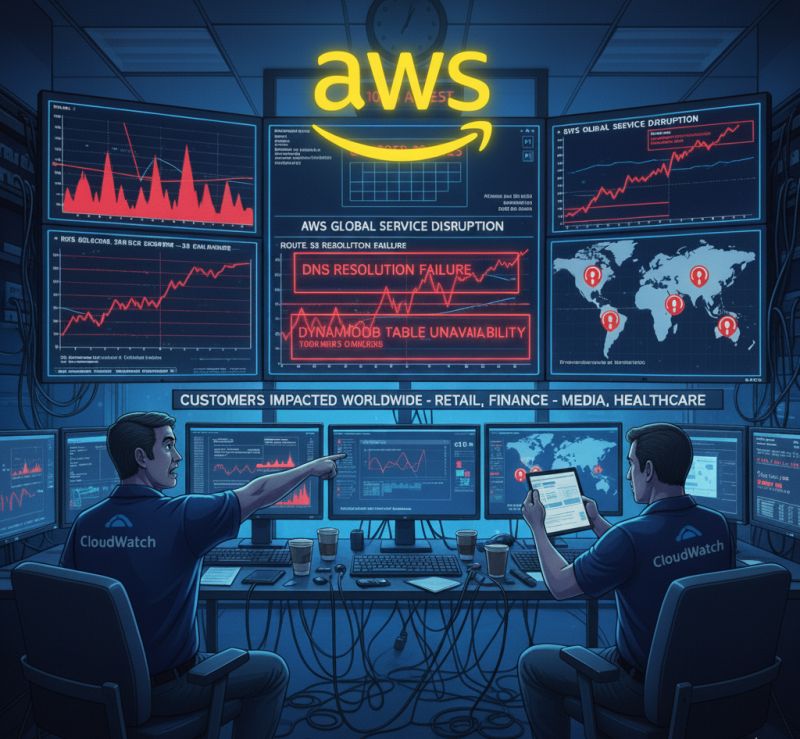The recent AWS DNS outage was a stark reminder of how interconnected cloud systems have become—and how a single failure can ripple across the internet
The recent AWS DNS outage was a stark reminder of how interconnected cloud systems have become—and how a single failure can ripple across the internet. While headlines often focus on downtime and financial losses, the outage also offers valuable lessons about how Cascading Failures can be prevented with thoughtful design, monitoring, and redundancy.
Understanding Cascading Failures
A Cascading Failure occurs when a problem in one part of a system triggers a chain reaction, causing failures in other parts. In complex cloud environments, this can happen in milliseconds: a misconfigured DNS record or a software bug can impact applications, databases, and even entire regions. The AWS DNS outage exemplified how fragile interconnected systems can be when safeguards aren’t fully implemented.
What Happened During the AWS DNS Outage
During the incident, AWS Route 53—Amazon’s cloud DNS service—experienced a significant disruption. This outage affected countless businesses relying on AWS for their web infrastructure, causing websites and applications to become temporarily unreachable. While AWS quickly resolved the issue, it exposed how dependent organizations are on centralized infrastructure and how easily Cascading Failures can amplify small technical problems.
Why Cascading Failures Aren’t Inevitable
Despite the severity of such outages, experts argue that Cascading Failures are not unavoidable. There are strategies and best practices that can significantly reduce risk:
1. Redundancy and Failover Systems
Having redundant DNS servers, multi-region deployments, and failover mechanisms can ensure that if one component fails, the system continues to operate smoothly. AWS and other cloud providers offer these options, but they must be implemented thoughtfully by users.
2. Decentralization
Relying solely on one cloud provider or service increases risk. Multi-cloud strategies or hybrid architectures can distribute dependencies, reducing the chances of a single failure triggering a wider outage.
3. Continuous Monitoring
Proactive monitoring allows teams to detect anomalies before they cascade. Real-time alerts and automated mitigation protocols can prevent minor issues from evolving into system-wide failures.
4. Stress Testing and Chaos Engineering
Regularly testing systems under simulated failures—popularized as chaos engineering—helps organizations understand vulnerabilities and develop robust fail-safes against Cascading Failures.
5. Clear Communication and Incident Response
Effective incident response plans, including internal and external communication, minimize the impact on users. Transparency about the nature of the failure and recovery timelines reduces confusion and reputational damage.
Lessons for Businesses
The AWS DNS outage is more than a technical story—it’s a lesson for businesses that rely heavily on cloud infrastructure:
- Don’t assume cloud providers alone will prevent Cascading Failures.
- Build resilient systems that can tolerate failures without complete downtime.
- Implement proactive monitoring and automated recovery wherever possible.
- Educate teams on chaos engineering principles to prepare for unexpected disruptions.
Conclusion
The AWS DNS outage highlighted the risks of modern cloud dependency, but it also proved a critical point: Cascading Failures are not inevitable. With proper system design, redundancy, monitoring, and proactive testing, businesses can mitigate the domino effect of failures and maintain service continuity. In today’s hyperconnected environment, resilience is no longer optional—it’s essential.



COMMENTS